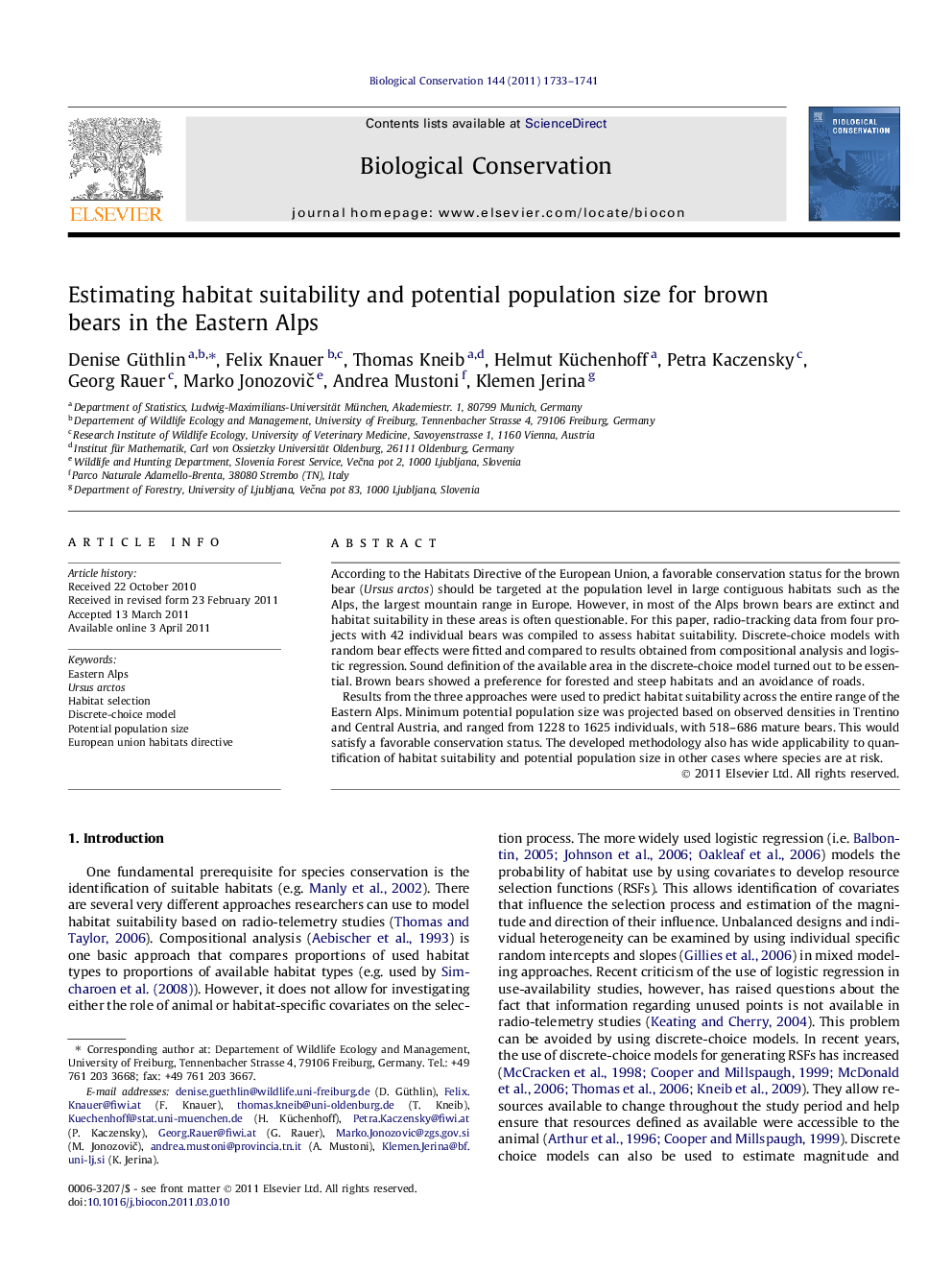| Article ID | Journal | Published Year | Pages | File Type |
|---|---|---|---|---|
| 4386023 | Biological Conservation | 2011 | 9 Pages |
According to the Habitats Directive of the European Union, a favorable conservation status for the brown bear (Ursus arctos) should be targeted at the population level in large contiguous habitats such as the Alps, the largest mountain range in Europe. However, in most of the Alps brown bears are extinct and habitat suitability in these areas is often questionable. For this paper, radio-tracking data from four projects with 42 individual bears was compiled to assess habitat suitability. Discrete-choice models with random bear effects were fitted and compared to results obtained from compositional analysis and logistic regression. Sound definition of the available area in the discrete-choice model turned out to be essential. Brown bears showed a preference for forested and steep habitats and an avoidance of roads.Results from the three approaches were used to predict habitat suitability across the entire range of the Eastern Alps. Minimum potential population size was projected based on observed densities in Trentino and Central Austria, and ranged from 1228 to 1625 individuals, with 518–686 mature bears. This would satisfy a favorable conservation status. The developed methodology also has wide applicability to quantification of habitat suitability and potential population size in other cases where species are at risk.
